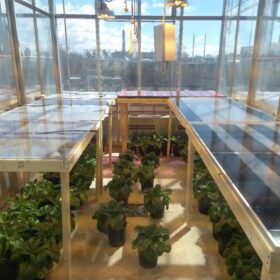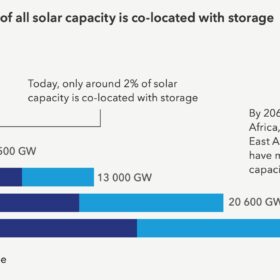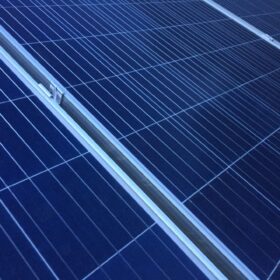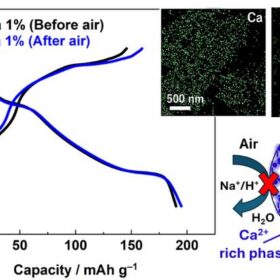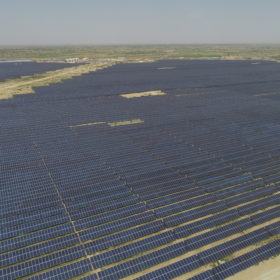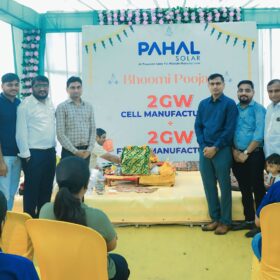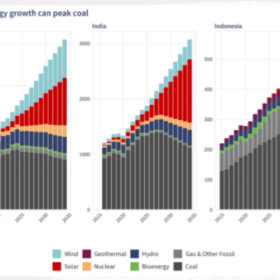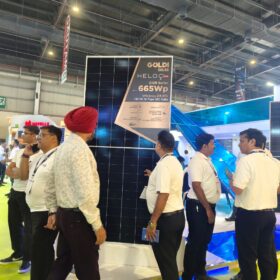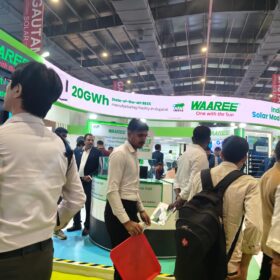How startups are driving affordable battery solutions for Bharat
With lithium being an imported raw material, recycling and repurposing of lithium batteries once they have completed their lifecycle is paramount. In line with this, Indian startups have come up with several ingenious business models for second-life applications that repurpose EV or lithium-ion batteries for stationary storage.
Cadmium telluride vs. crystalline silicon in agrivoltaics
Canadian researchers investigated how the transparency of cadmium telluride and crystalline silicon solar panels affects lettuce growth in agrivoltaic systems. They found that 69%–transparent silicon panels increased lettuce yield by 3.6%, whereas cadmium telluride panels led to a reduction in yield.
ADB, World Bank commit $12.5 billion to ASEAN Power Grid plan
The Asian Development Bank (ADB) and World Bank have launched a $12.5 billion initiative to finance regional power interconnection in Southeast Asia under the ASEAN Power Grid program.
Beyond energy independence: Backward integration as India’s edge
Countries reliant on imported minerals and components are rethinking energy strategies in solar, batteries, and green hydrogen. Securing upstream and midstream processes is no longer optional but essential for flexibility. India’s integrated approach across mining, processing, and manufacturing positions the country as a challenging player on the world stage.
Nearly half of solar capacity will be co-located with storage by 2060, says DNV
DNV’s Energy Transition Outlook 2025 report also predicts that distributed generation solar should begin outpacing utility-scale installations in some parts of the world by 2060. It adds that the levelized cost of electricity for solar is beginning to plateau and is expected to slow to an annual drop below 1% by the 2050s.
How India’s move to secure rooftop solar data with stricter inverter protocols will help to protect energy sovereignty
India’s decision to tighten inverter protocols and secure rooftop solar data under national jurisdiction is a critical step toward reinforcing its energy sovereignty. With ambitious rooftop solar targets already underway, these measures help ensure that growth in clean energy does not come at the cost of vulnerability in grid security, data privacy, or foreign dependence.
NHPC’s 300 MW Karnisar solar plant now fully operational
NHPC has announced that its 300 MW Karnisar solar plant, located in the Bikaner district of Rajasthan, is now fully operational.
Improving sodium-ion battery stability with calcium
Researchers in Japan have adopted a new calcium-doping strategy to improve the stability and electrochemical properties of NFM, a cathode material used in sodium-ion batteries. The new technique enhances crystallinity and increases the interlayer spacing in NFM, resulting in higher performance compared to NFM treated with conventional processes.
“India’s renewable energy market is entering a transformative phase”: ENGIE India’s Shantanu Upasani
Hybrid and storage integration, rising corporate demand, and increased use of digital tools are defining the next phase of India’s renewable energy market. Developers that combine execution excellence with storage innovation, digital intelligence, and corporate partnerships will set the pace of growth, says Shantanu Upasani, Director – Construction, ENGIE India.
ACME Solar secures PPA with Tata Power-D for 50 MW FDRE project
ACME Solar Holdings Ltd has secured a 25-year Power Purchase Agreement (PPA) with the Tata Power Co. Ltd (Tata Power-D) for its 50 MW Firm and Dispatchable Renewable Energy (FDRE) project.

